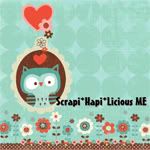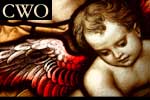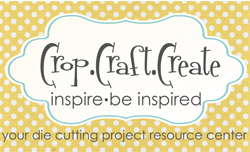I know for a fact that ALL of us are extremely busy nowadays simply because of Christmas.
I know also that ALL of us are dealing with personal worries and problems in our lives.
I know very well that we ALL have pending projects that only time can tell when each projects be done.
In my case, my list is endless and whenever I sit in my craft room just staring at my list already tires me hahahahahhaahahahahahahha. Sometimes I wonder if I will ever be able to accomplish all on my list hahahahahaha. It's not the same anymore as last year when time is mine and mine alone when the house is empty. This year I have to divide my time but the heck with time management - it doesn't work for me hahahahahaha.
This clay ornament project is not on my list but since I got overwhelmed with my pending list, I rebelled! hahahahahahhahahahahahaha
I know also that ALL of us are dealing with personal worries and problems in our lives.
I know very well that we ALL have pending projects that only time can tell when each projects be done.
In my case, my list is endless and whenever I sit in my craft room just staring at my list already tires me hahahahahhaahahahahahahha. Sometimes I wonder if I will ever be able to accomplish all on my list hahahahahaha. It's not the same anymore as last year when time is mine and mine alone when the house is empty. This year I have to divide my time but the heck with time management - it doesn't work for me hahahahahaha.
This clay ornament project is not on my list but since I got overwhelmed with my pending list, I rebelled! hahahahahahhahahahahahaha
Playing with clay is not my first time ... if you remember what i did for my DMIL's birthday give-a-ways http://scrapbookingwithjerosha.blogspot.com/2009/03/stamping-on-clay.html
This time I grabbed few of my big rubber stamps plus some cookie cutters and metallic paints. I used a paper clay so it will be lightweight coz I'm not sure if I will use it on my cards or make some more and hang in our Christmas tree. Using a paper clay that is really light as a paper, I find it unmanageable when using a clay machine. So, I ended up using a clay roller which is ssssssssooooooo much better.
I love the embossed designs but my favorite shape is the mother and father shape coz it symbolizes my mom and dad who have been resting int he arms of our Lord for more than a decade now. Joseph's favorite are the Christmas tree and the reindeer coz it sparkles after adding glitters. DH's fave are the round ones coz he likes the intricacy of the impressions.
Now, which is your fave?
Here's to show you an idea how I made these ornaments .....
My messy craft desk with the tools needed
The lightweight paper clay ... cookie cutters ... and basic tools. Flatten the clay then make an impression using your preferred rubber stamps then cut using cookie cutters.
The rubber stamps i chose for this project
Mom and dad
The tree, reindeer, and heart
The usual shape of ornament - round








 Posted by
Posted by



































































